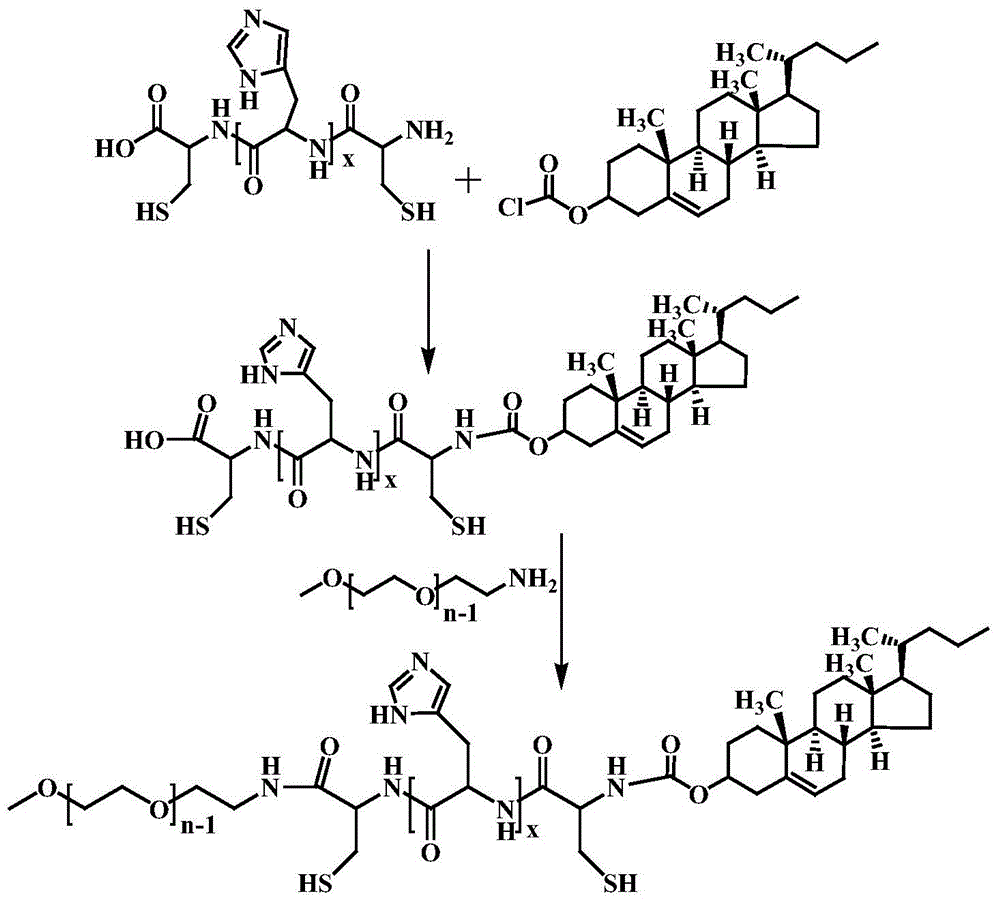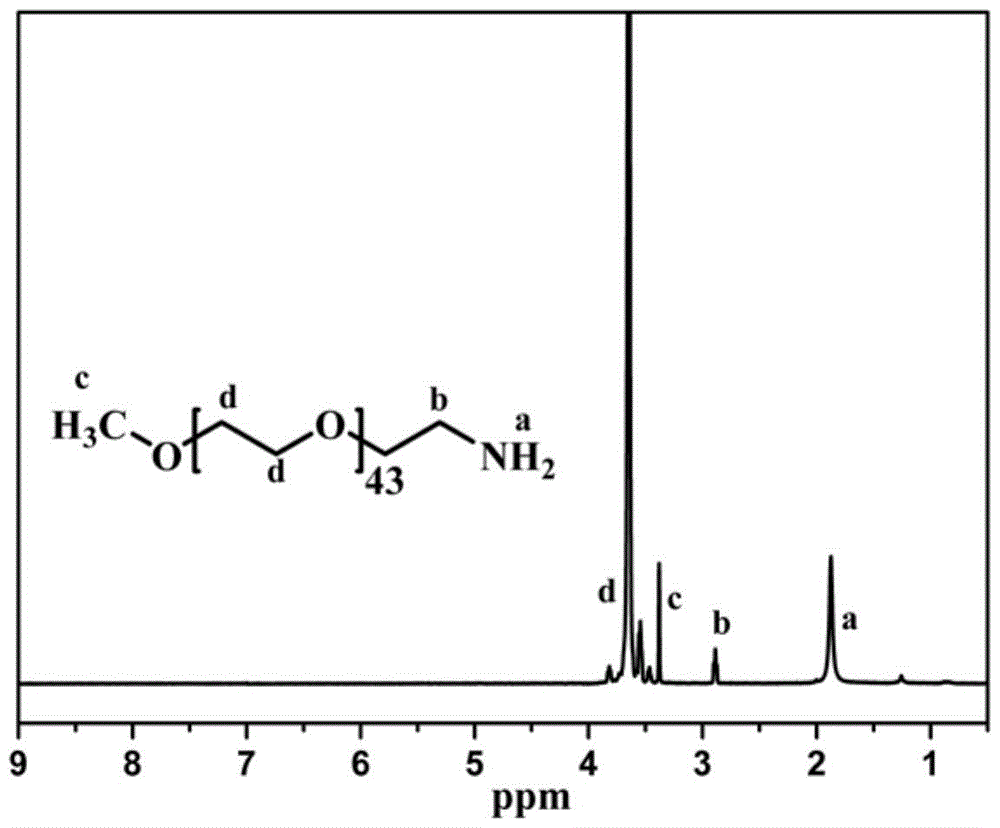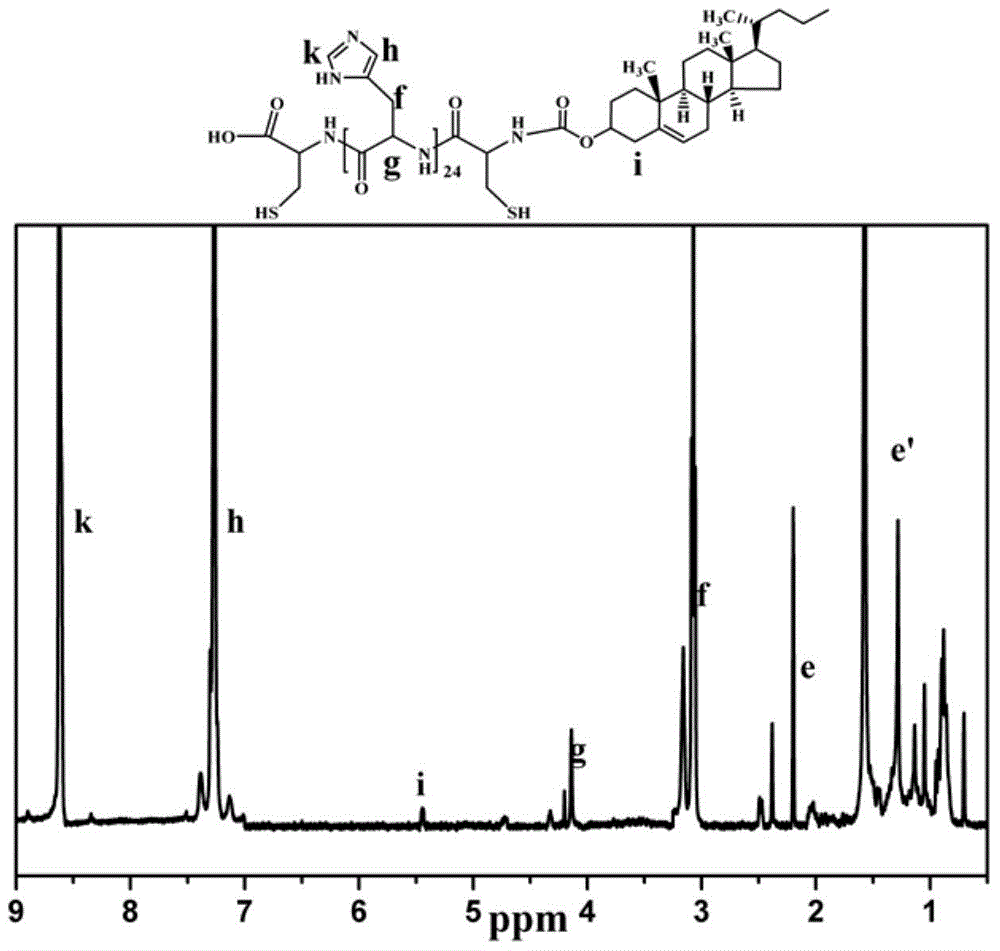Ph-responsive polypeptide polymer based on cholesterol modification, preparation method and application
A technology of peptide polymers and cholesterol, which is applied in the direction of non-active ingredients of high molecular compounds, drug combinations, emulsion delivery, etc., can solve the problem of decreased white blood cells, red blood cell platelets, reduced drug availability and therapeutic effect, normal tissue cell damage, etc. problem, to achieve the effect of accelerating drug release rate, improving pH response sensitivity and release efficiency, and increasing drug loading
- Summary
- Abstract
- Description
- Claims
- Application Information
AI Technical Summary
Problems solved by technology
Method used
Image
Examples
Embodiment 1
[0070] Example 1: Preparation of pH-responsive polypeptide polymer based on cholesterol modification
[0071] The reaction formula for the preparation of pH-responsive polypeptide polymers based on cholesterol modification is shown in figure 1 .
[0072] (1) The preparation of the polypeptide having the structure shown in formula (2) can be prepared by conventional solid-phase synthesis polypeptide preparation method, which can be prepared by the following method: put 2-chlorotrityl chloride resin (2-Chlorotrityl Chloride Resin) into Into the reaction tube, add dichloromethane (15mL / g), shake for 30min. Remove the solvent by suction filtration, add a 3-fold molar excess of Fmoc-Cys(Trt)-OH amino acid, add N,N-dimethylformamide to dissolve, and then add a 10-fold molar excess of N,N-diisopropylethylamine , shake for 60min, seal with methanol, add 20% piperidine N,N-dimethylformamide solution (15mL / g), mix for 15min, and use N,N-dimethylformamide solution and dichloromethane s...
Embodiment 2
[0076] Example 2: Preparation of pH-responsive polypeptide polymer based on cholesterol modification
[0077] (1) The preparation of the polypeptide shown in formula (3) adopts the conventional solid-phase synthesis polypeptide preparation method, which can be prepared by the following method: 2-Chlorotrityl Chloride Resin (2-Chlorotrityl Chloride Resin) is put into the reaction Add dichloromethane (15mL / g) to the tube and shake for 30min. Filter out the solvent through a sand core, add 3-fold molar excess of Fmoc-Cys(Trt)-OH amino acid, add N,N-dimethylformamide to dissolve, and then add 10-fold molar excess of N,N-diisopropyl ethylamine, shaken for 60min. Block with methanol. Add 20% piperidine N,N-dimethylformamide solution (15mL / g), mix for 15min, rinse with N,N-dimethylformamide solution and dichloromethane solution twice. Add three times the molar amount of amino acid and O-benzotriazole-tetramethyluronium hexafluorophosphate, and ten times the molar amount of N,N-dii...
Embodiment 3
[0080] Example 3: Preparation of pH-responsive polypeptide polymer based on cholesterol modification
[0081] (1) The preparation of the polypeptide shown in formula (4) adopts the conventional solid-phase synthesis polypeptide preparation method, which can be prepared by the following method: 2-Chlorotrityl Chloride Resin (2-Chlorotrityl Chloride Resin) is put into the reaction Add dichloromethane (15mL / g) to the tube and shake for 30min. Filter out the solvent through a sand core, add 3-fold molar excess of Fmoc-Cys(Trt)-OH amino acid, add N,N-dimethylformamide to dissolve, and then add 10-fold molar excess of N,N-diisopropyl ethylamine, shaken for 60min. Block with methanol. Add 20% piperidine N,N-dimethylformamide solution (15mL / g), mix for 15min, rinse with N,N-dimethylformamide solution and dichloromethane solution twice. Put in a three-fold molar excess of the special raw material Fmoc-Lys(Fmoc)-OH, a three-fold molar excess of O-benzotriazole-tetramethyluronium hexa...
PUM
| Property | Measurement | Unit |
|---|---|---|
| critical micelle concentration (mass) | aaaaa | aaaaa |
| concentration | aaaaa | aaaaa |
Abstract
Description
Claims
Application Information
 Login to View More
Login to View More - R&D
- Intellectual Property
- Life Sciences
- Materials
- Tech Scout
- Unparalleled Data Quality
- Higher Quality Content
- 60% Fewer Hallucinations
Browse by: Latest US Patents, China's latest patents, Technical Efficacy Thesaurus, Application Domain, Technology Topic, Popular Technical Reports.
© 2025 PatSnap. All rights reserved.Legal|Privacy policy|Modern Slavery Act Transparency Statement|Sitemap|About US| Contact US: help@patsnap.com



